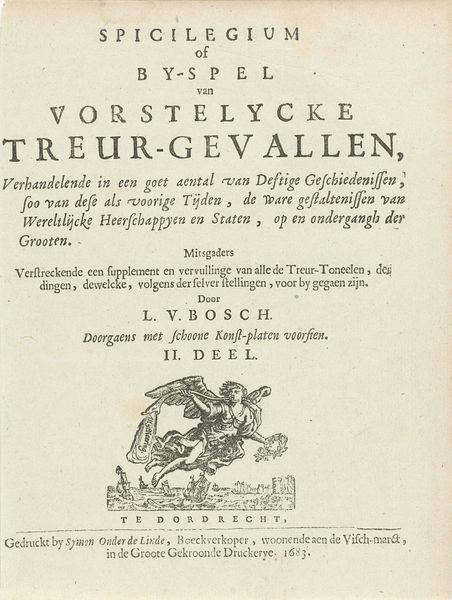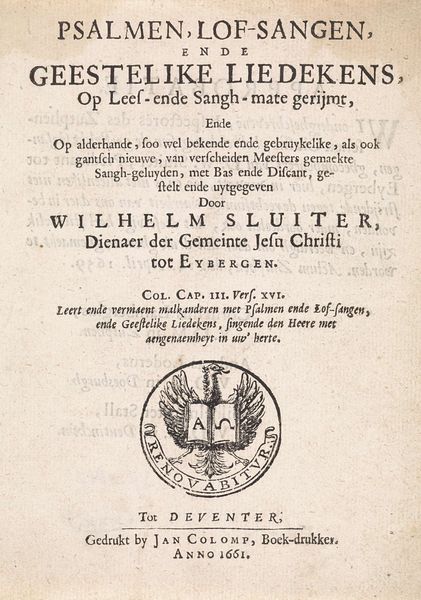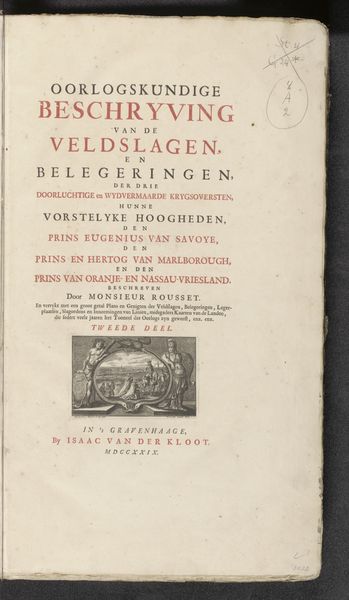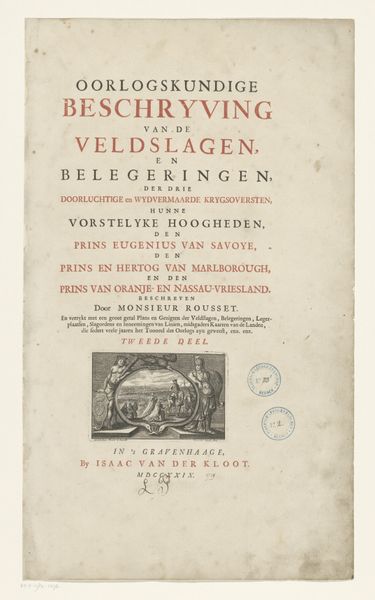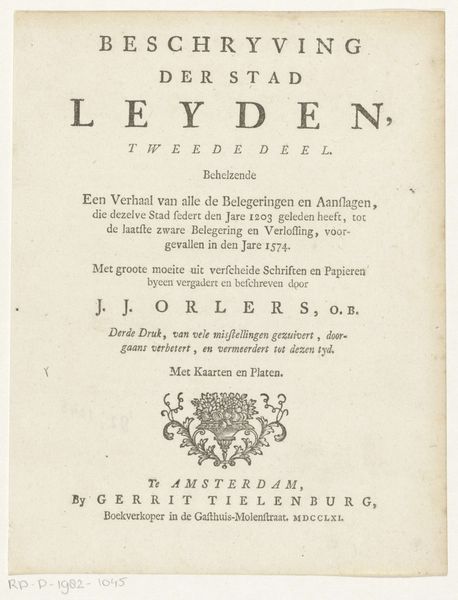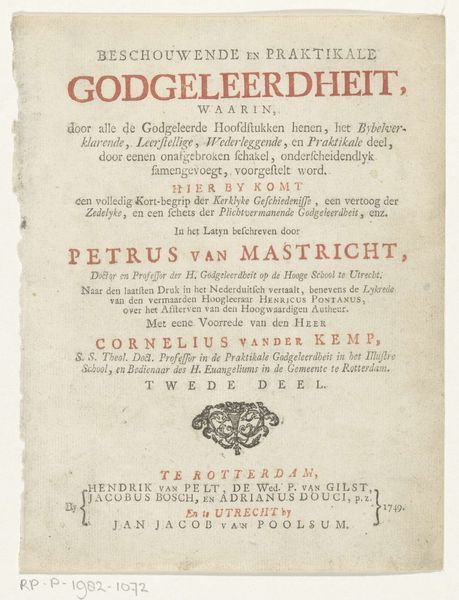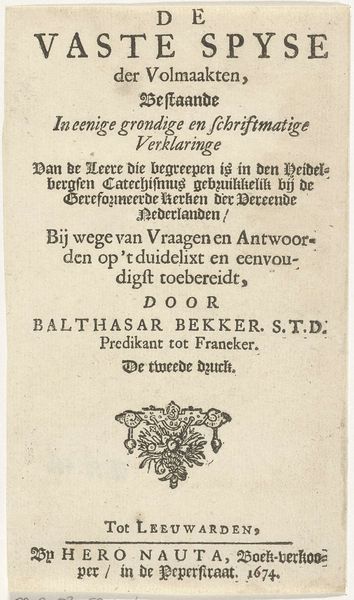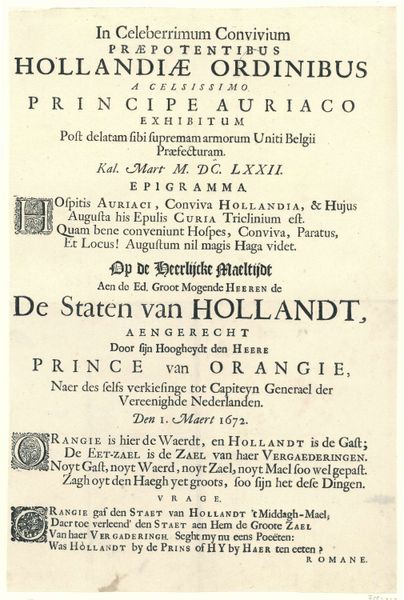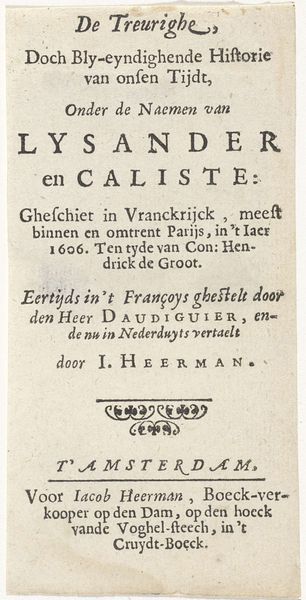
Titelpagina voor: L. van den Bos, Toneel der ongevallen, en bijspel van vorstelycke treurgevallen, 1699 1699
0:00
0:00
print, typography, engraving
#
baroque
#
dutch-golden-age
# print
#
flower
#
typography
#
history-painting
#
engraving
#
historical font
Dimensions: height 181 mm, width 138 mm
Copyright: Rijks Museum: Open Domain
Editor: This is the title page for *Toneel der ongevallen, en bijspel van vorstelycke treurgevallen,* from 1699, by L. van den Bos, though designed by Arnold Houbraken. It’s an engraving and typography print. I'm immediately drawn to the contrast between the somewhat grim subject matter hinted at by the text and the charming little flower arrangement in the center. How do you see this page functioning within its historical context? Curator: That’s a very perceptive observation. Consider the Baroque period. This print exemplifies how art served to communicate moral and political messages. What do you notice about the text itself and the way it is arranged? Editor: The text is dense and descriptive, detailing the "accidents" and "royal tragedies," and refers to the "miseries of worldly powers." It is warning against specific things to be aware of. The fonts seem quite...stern, maybe? It really seems concerned with the downfall of leaders and nations. Curator: Precisely! And notice the deliberate choice of the publisher and the description of what can be found inside this book of accidents. This wasn't just a decorative piece. It directly engaged with the social and political concerns of the Dutch Golden Age. How does that inform our understanding of its role within Dutch society? Editor: It sounds like this book would have provided a historical framework through which contemporary audiences might interpret their own society and possibly warn the leadership! But did the flowers on the page suggest something too? It seems a funny counterpoint, somehow. Curator: Indeed. Flowers at that time often had symbolic meaning. What if the inclusion of flowers signifies the fleeting nature of life and earthly power, juxtaposed with the harsh realities described in the book? This print demonstrates how images can reflect deeper societal anxieties and moral lessons. Does seeing the artwork through the lens of cultural history shift your initial perception? Editor: Absolutely. I now see how even seemingly simple designs like title pages held multiple layers of meaning and served important social functions. That’s quite the insight.
Comments
No comments
Be the first to comment and join the conversation on the ultimate creative platform.

